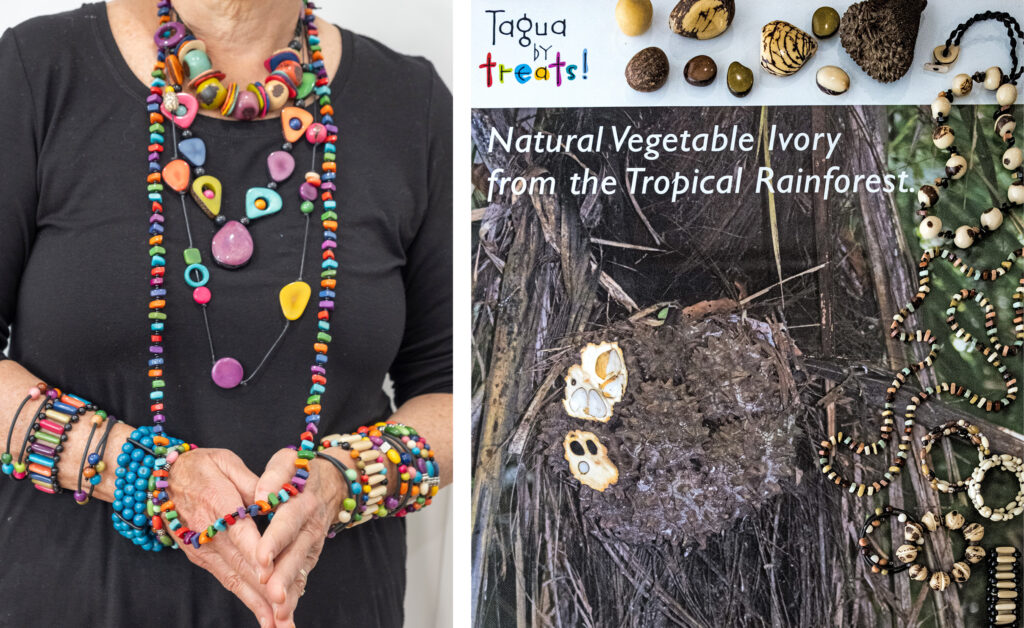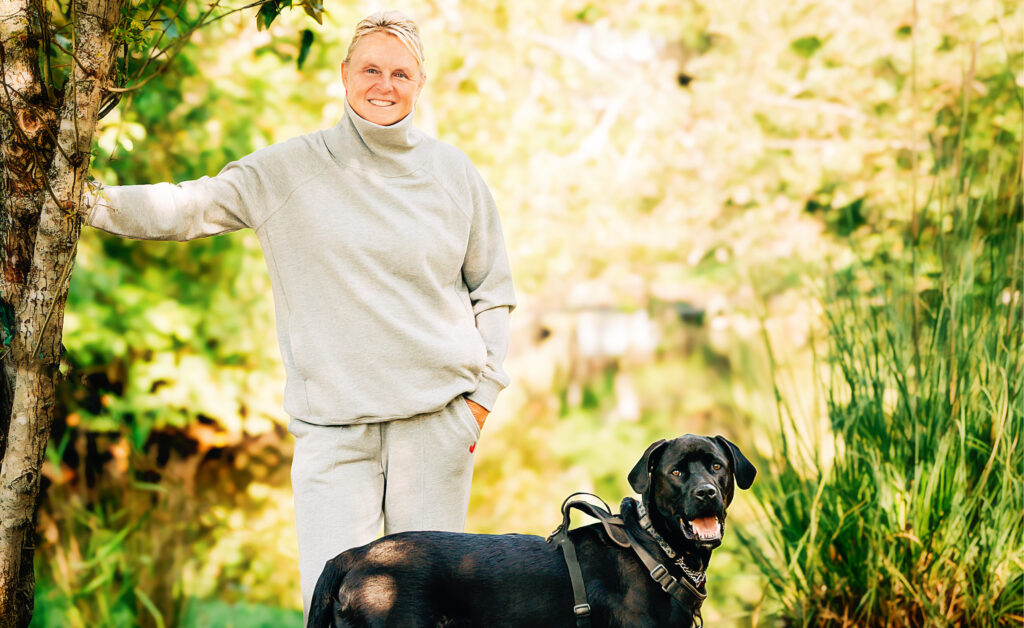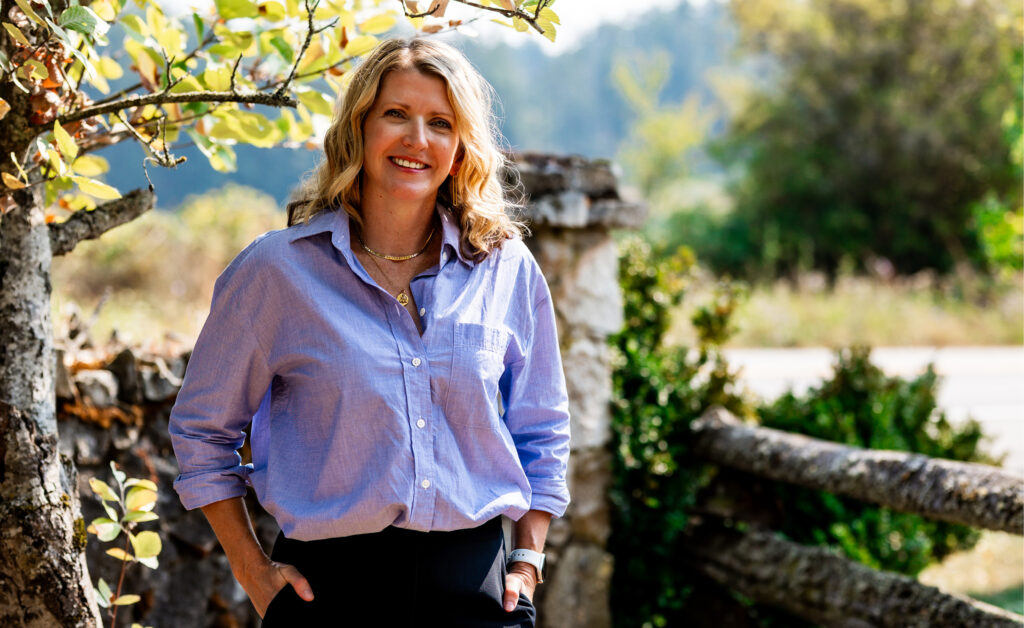Words Jo Barnes
Photos Tanya Murchie
An exquisite piece of jewelry can dazzle the eye. But when it conveys a unique story, that’s a whole other level of attractiveness. Ande Axelrod of Treats Designs crafts stunning necklaces, bracelets and earrings in her Sidney studio, but it’s the sustainable eco-friendly tagua seeds from which this jewelry is made that captivates both customer and admirers.
“This art is beautiful and sustainable using fair-trade sources,” shares Ande. “The tagua palm grows in the lowland rainforests of Ecuador. Its seed is the size of a large walnut that grows in a pod the size of a volleyball. You scrape away the bark to reveal seeds that are creamy white and hard like elephant ivory. Known as ‘vegetable ivory,’ seeds can be carved and dyed. Customers love to tell others the story of the jewelry they get from me.”
The scientific name for tagua is phytelephas, which means “plant elephant” due to the fact that the seeds, once polished, resemble elephant ivory. Dating back to the 1900s, when British merchants first used the “ivory” for buttons on men’s shirts, and since its use as an alternate to real elephant ivory, the tagua seed has become a symbol of preservation. Ande shares this story by way of a tag attached to her jewelry creations. “I provide a card with a picture of the tagua tree and seed and share why it is known as the ‘vegetable ivory’,” says Ande. “Everybody asks me about it.”
A trip to Ecuador in 2012 provided an opportunity for Ande to see tagua for the first time. She was quite taken with it and brought some back to Canada. “I had already booked a tour all about weaving by the Quechua people,” she says. “The tour took me to a workshop where they were making tagua jewelry. I came home with some of it and thought it was really cool, whimsical jewelry.”
A trained graphic designer, Ande has enjoyed applying her love of art to a variety of art mediums. Tagua jewelry, however, has brought new opportunities not only in terms of art but also personal connections. “I got my BFA at the University of Illinois and became a graphic designer in Vancouver. I have also done greeting card design, pottery, and lots of photography,” she relates. “This art provides the opportunity to travel as part of my life and has the environmental connection. I enjoy working with the artisans in Ecuador and value their part of the creative process.”
Groups of people harvest and dry the tagua seeds, which is vital in protecting the rainforest land. Tagua differs from other cash crops like palm oil or timber because it can be sustainably harvested and doesn’t harm the rainforest habitat. The seeds naturally fall from the palm, are harvested by hand, and contribute to biodiversity.
Ande works closely with a group of talented artisans in the small village of Sosote. She creates her own unique designs and then sends sketches of them as well the particular colours and sizes of tagua each piece requires. “I create my original designs and send drawings of these unique ideas,” she relates, adding with a laugh: “I use Google translator because my Spanish is not great!”
The tagua nut is shaped into a variety of forms, then put through a rock tumbler so that they become beautifully polished. Tagua seeds take dye extremely well, so there are endless combinations possible. “My jewelry is full of whimsical bright colours and unexpected colour combinations.
Some are asymmetrical pieces. Some are adjustable; you can wear them in different ways. For instance, I create necklaces that have clips on them so you can attach your eyeglasses,” she outlines. “The earrings are lightweight so they don’t load too much weight on the earlobe.”
Over recent years, most of Ande’s jewelry work has been exhibited through juried art shows. Nowadays, she is focusing more on wholesale clients and customers who either go in person to her Sidney studio or order online.
The creative process is very satisfying for Ande. “I’ve always had a love of colour and putting colour combinations together,” she shares. “I love the creative process and working with my hands.”
But even more rewarding is the joy that her art brings to others. “The jewelry pieces are fun and whimsical,” Ande relates. “Customers say to me: ‘This makes me feel happy’. ”
Traditionally, jewelry is a statement of expression and status and is a way to decorate the body. Ande’s tagua creations too are eye-catching and beautiful, but they also make a statement about protecting the environment and supporting communities in the rainforest. That is the kind of beauty with immeasurable value.
www.treatsdesigns.com




